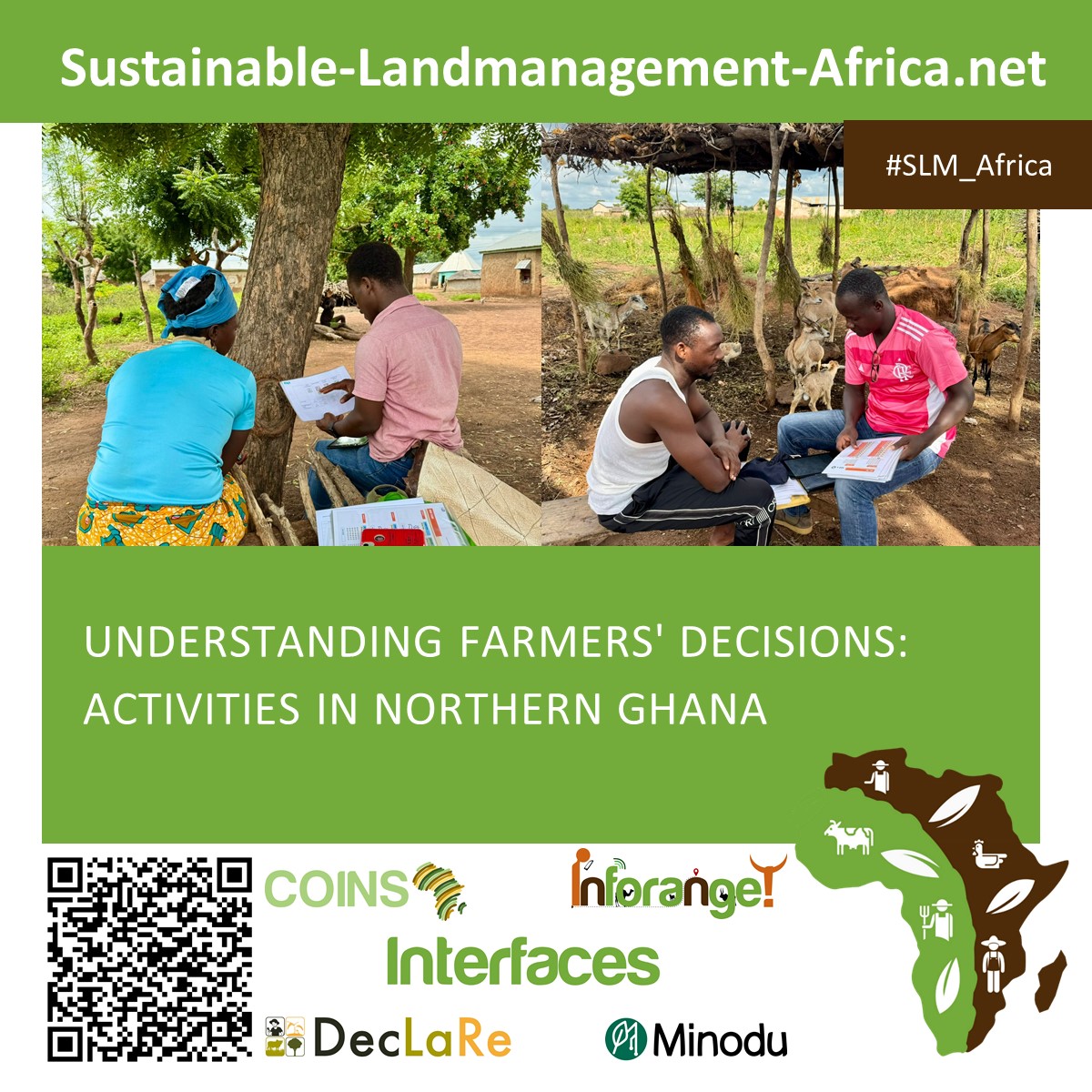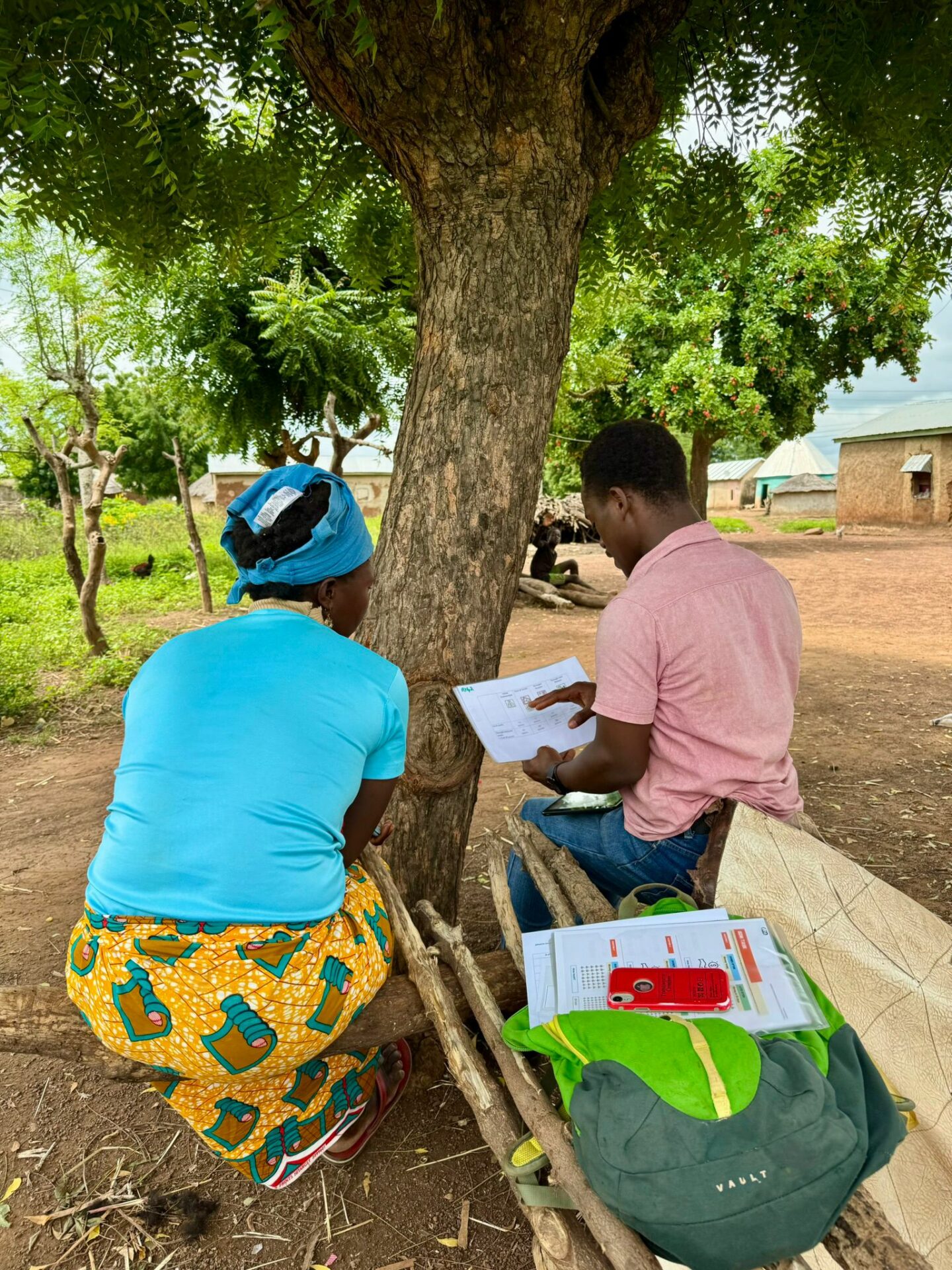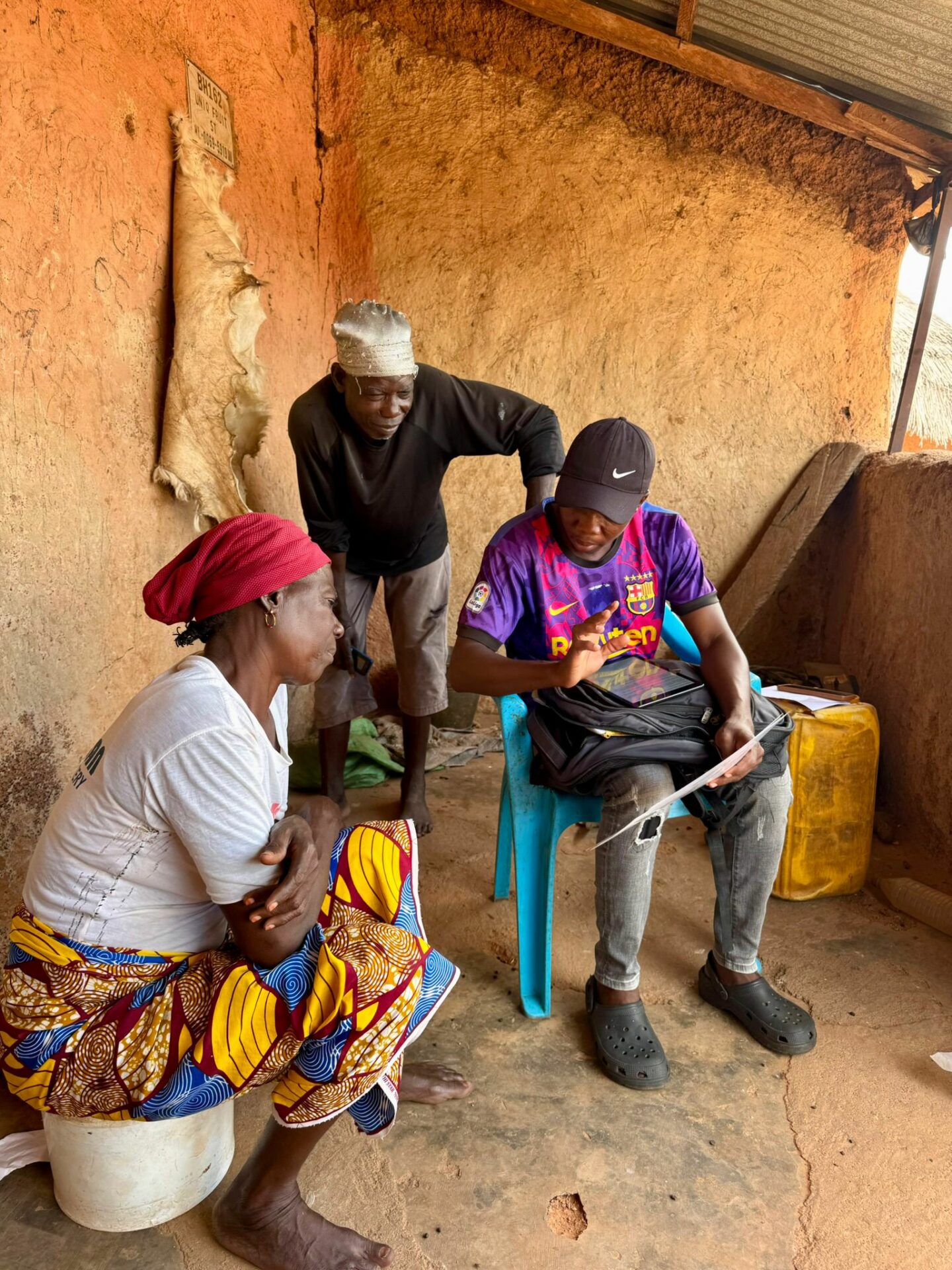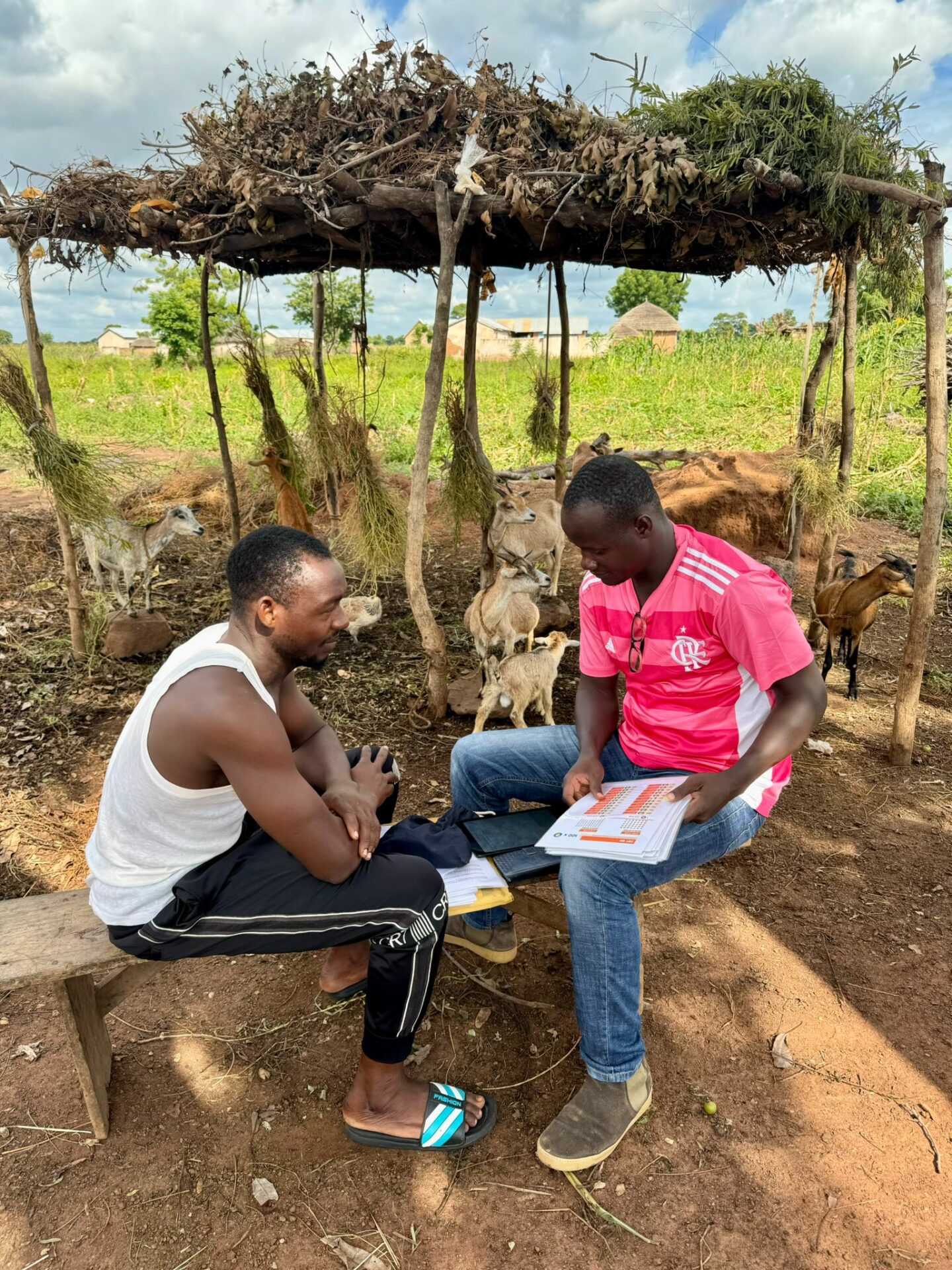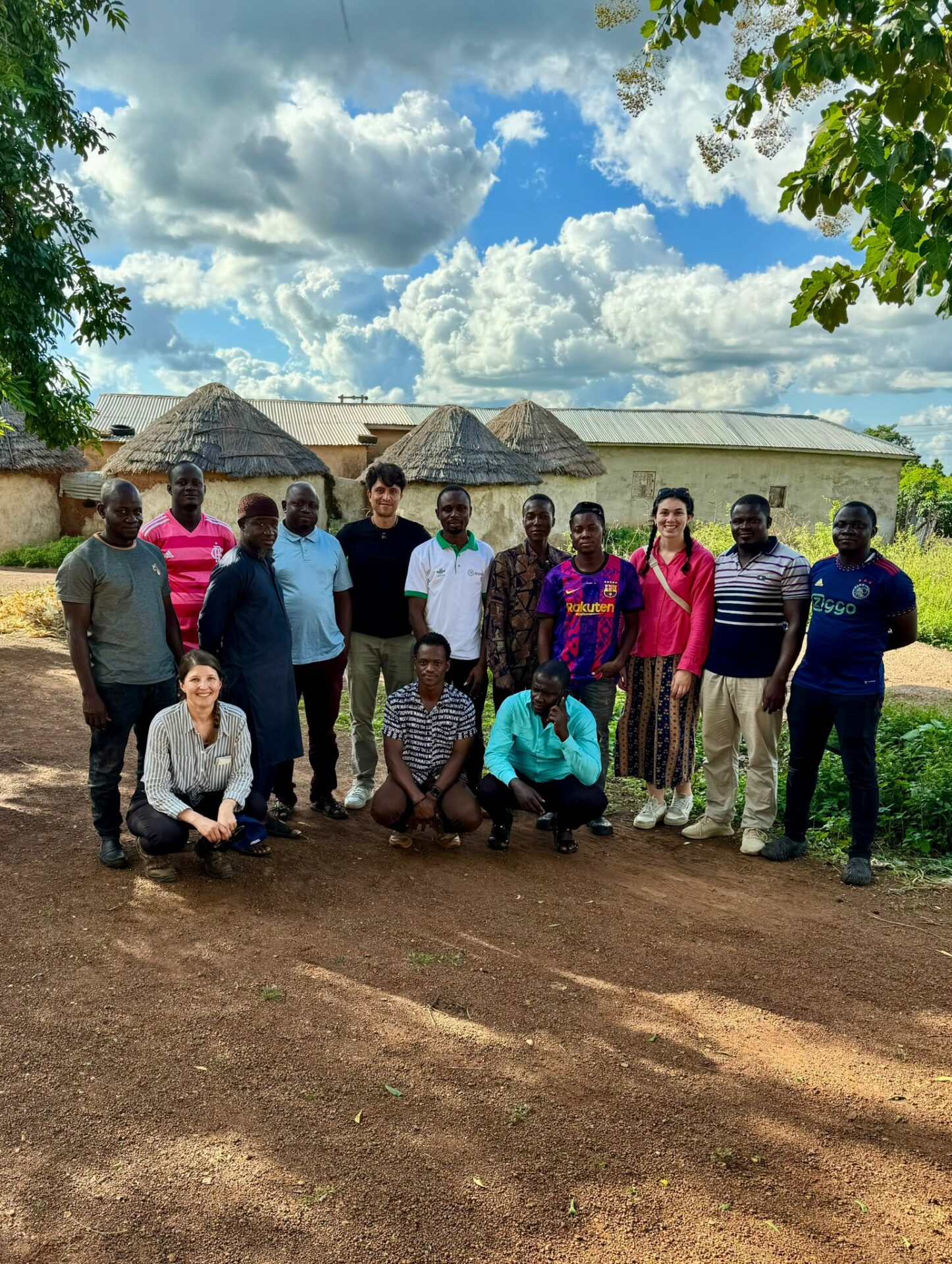As part of the COINS project’s enabling work package, staff from the Institute for Food and Resources Economics of the University of Bonn (ILR- Uni Bonn) visited the districts of Savelugu, Tolon, and Mion in Northern Ghana in October 2024. The two main objectives of this trip were to calibrate the business model for mixed cereals agricultural systems through expert knowledge, and to collect data to understand the role of incentives, such as subsidies and insurance, in farmers’ adoption of new technologies, mainly drought-tolerant maize seeds.
Expert Workshop
The visit included a series of carefully planned activities. First, we conducted an expert workshop (October 10) to bring together local experts on the different dimensions of the business model to refine our modelling approach. This activity was done in cooperation with the Hortibonn – INRES lab. We worked alongside integrated soil fertility management (ISFM) experts to fine-tune the agricultural systems being modelled and assess the impacts of ISFM components. We are using the new insights to adjust the system modelled and rerun our outcome simulations.
Training the enumerators
Second (October 12–13), we trained a group of 10 enumerators, some of whom already had experienced in data collection in the region from previous COINS surveys, as preparatory activity to the data collection. We trained them to conduct the implementation of questionnaires to elucidate information on farmers’ decisions related to the adoption of new agricultural technology based on subsidies and insurance instruments. Moreover, the questionnaire explored present versus future income decisions through lotteries testing different combinations. This complements our understanding of farmers’ time and risk preferences. We also tested the questionnaire for two days before starting the data collection; conducting a pilot, (October 14–15) to ensure the tool was well understood by both the enumerators and participants and to make any necessary amendments.
Implementing the questionnaire
The questionnaire was implemented (October 17-30) reaching a total of 400 householders in 18 villages across the three districts. In the first part of the questionnaire, farmers were presented with different cost scenarios for seeds and asked to decide between using traditional seeds or improved drought-tolerant seeds, with different wealth outcomes depending on whether the cropping season experienced adequate rains or droughts. We then introduced various insurance instruments to evaluate how these might influence seed choices during a cropping season. In the second part, farmers participated in lotteries where they chose between receiving a payment immediately or waiting for a payout one or two months later. From the decisions made by farmers in the two parts, two were randomly selected (one for each part) for incentivization. The information obtained will help us understand the role of cost differences and indexed-based insurance instruments on adoption, as well as estimate farmers’ time and risk preferences.
Observations from the Field
All farmers that took part in our data collection produced maize, with some engaging in the production of soybeans. We also observed a diversity of rural livelihoods, with families engaged in activities beyond farming, such as drying chilies and peanuts, producing shea butter, and small-scale trading.
Community reception was overwhelmingly positive. Farmers were engaged and showed interest in the study. The severe drought and reduced harvests in 2024 highlighted the importance of even small incentives, which were appreciated by many participants.
The questionnaire was implemented at the end of the cropping season, in a year in which the drought spell hit the country hard. This was reflected in the farmers’ high interest of the technology presented in the decision scenario, as well as on the possibility to reduce the negative effects through insurance instruments. Moreover, the time preference tasks, revealed interesting behavioural patterns. Some participants preferred immediate payouts due to pressing family needs, while others were willing to wait, emphasizing the value of patience. These findings provide valuable insights into the complexities of decision-making under constrained conditions.
Challenges and Lessons Learned
Managing multiple activities across three sections of the questionnaire required significant preparation. Enumerator training emphasized clear communication and included simple tools—like using a sack and table tennis balls to explain probabilities—to make abstract concepts more accessible.
Monitoring a dispersed team of 10 enumerators presented logistical challenges, addressed through a combination of technology (e.g., Kobo Toolbox’s audit function) and regular field visits. Despite these efforts, technical difficulties, such as two broken tablets and an unexpected minor road accident, reminded us of the realities of fieldwork.
Moving Forward
This visit was an important step in the COINS project’s work in Northern Ghana. While challenges remain, the experience has provided valuable insights into the factors and individual preferences influencing the adoption of sustainable farming practices. The next steps will focus on analyzing the data collected, and we expect to publish our results in the coming months.
